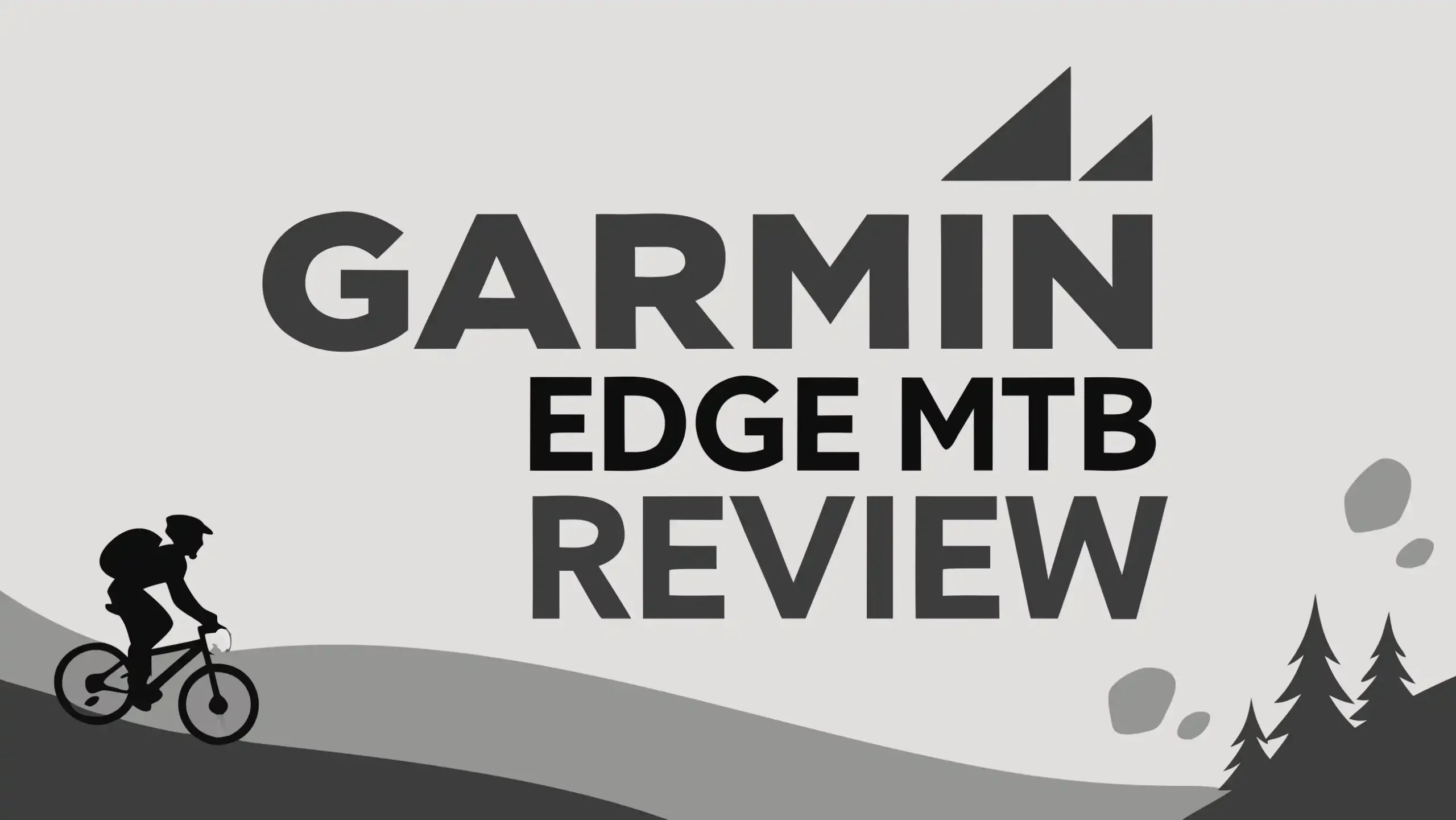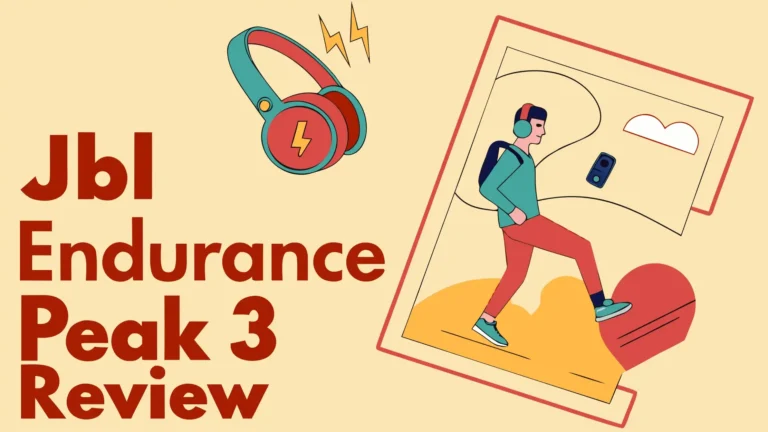Garmin Edge MTB Review: Is It Worth The Hype?
Mountain bikers have waited nearly two decades for this moment. Garmin finally created a GPS device specifically designed for trail riders.
The Garmin Edge MTB represents a significant shift from pure performance metrics to features that matter most to mountain biking enthusiasts.
This specialized GPS computer combines rugged hardware with innovative software features. Trail navigation becomes effortless with enhanced Forksight technology.

Key Takeaways
- Revolutionary Recording Technology: The Edge MTB introduces 5Hz GPS recording that captures position data five times per second instead of once. This creates smoother, more accurate trail maps and better represents tight switchbacks and high-speed sections.
- Trail-Specific Intelligence: Enhanced Forksight feature displays comprehensive trail information at intersections. Riders see trail names, difficulty ratings, elevation changes, and direction indicators. This eliminates guesswork when exploring new trail systems.
- Timing Gates Innovation: Create personal enduro courses with up to 10 virtual timing gates. The system automatically records split times and compares performance across multiple runs. This gamification element adds motivation for skill improvement.
Garmin Edge MTB Technical Specifications
- Compact, rugged GPS bike computer is purpose-built for mountain bikers with 7-button...
- Colorful, sunlight-readable display features scratch-resistant Corning Gorilla Glass to...
The Edge MTB features a 2.13-inch color display with 240×320 pixel resolution. The screen uses Gorilla Glass protection for enhanced scratch resistance. The device measures smaller than previous Edge models while maintaining excellent readability.
Battery performance varies significantly based on recording mode. Standard recording provides 26 hours of continuous use. The high-speed 5Hz mode reduces this to 14 hours. Most mountain bike rides fall well within these limits.
Storage capacity reaches 32GB, double the Edge 540’s capacity. This accommodates detailed trail maps and extended ride history. The device stores up to 200 hours of mapping data for offline reference.
The unit weighs 56.8 grams without mounting hardware. This represents a significant reduction from larger Edge models. The compact size reduces aerodynamic drag and crash damage potential.
Multi-band GNSS support includes GPS, GLONASS, and Galileo systems. This provides reliable positioning in challenging terrain with heavy tree cover. Signal acquisition typically occurs within 5 seconds of power-on.
Enhanced Trail Navigation Features
The enhanced Forksight system transforms trail junction navigation. Previous versions showed basic trail names and difficulty ratings. The Edge MTB expands this information significantly.
Trail intersection data now includes elevation gain and loss for each option. Distance information helps riders choose appropriate routes based on available time. Direction arrows eliminate confusion about trail orientation.
The system automatically activates when riders approach recognized trail junctions. Data comes from the TrailForks database, covering thousands of trail systems worldwide. Areas without TrailForks coverage won’t display this information.
Trail difficulty breakdown appears in post-ride summaries. The display shows time spent on green, blue, black, and double-black trails. This helps riders track progression and plan future adventures.
Navigation accuracy benefits from multi-band GPS reception. The system maintains position locks in dense forest conditions. Turn-by-turn directions work reliably even in challenging environments.
Revolutionary 5Hz GPS Recording
- Compact, rugged GPS bike computer is purpose-built for mountain bikers with 7-button...
- Colorful, sunlight-readable display features scratch-resistant Corning Gorilla Glass to...
Traditional GPS devices record position data once per second. The Edge MTB increases this to five times per second during descents. This creates dramatically more accurate trail representations.
High-speed recording activation depends on the selected activity profile. Enduro mode requires manual toggling between climbing and descending phases. Downhill mode automatically detects elevation changes and activates accordingly.
The purple indicator shows when 5Hz recording is active. A brief purple screen border appears during initial activation. The icon remains visible throughout high-speed recording periods.
Battery consumption increases significantly during 5Hz operation. Standard mode provides 26-hour battery life versus 14 hours in high-speed mode. Most riders can complete full-day adventures within these limits.
Data file compatibility maintains backward compatibility with existing applications. Standard software sees traditional 1-second intervals. Updated applications access the enhanced 5Hz dataset for detailed analysis.
Top 3 Alternatives for Garmin Edge MTB
- ELEMNT BOLT 2
- Built to provide a simple, intuitive ride experience
- Advanced GPS cycling computer with button controls combines superior navigation, planning...
- Battery life: up to 26 hours in demanding use cases; up to 42 hours in battery saver mode
- Advanced GPS bike computer combines superior navigation, planning and performance...
- Find your way in the most challenging environments with multi-band GNSS technology that...
Innovative Timing Gates System
The timing gates feature creates personalized enduro courses on favorite trails. Riders establish up to 10 virtual checkpoints along any route. The system automatically records split times and performance comparisons.
Course creation requires physical presence at the trail location. Riders walk or ride the intended course while marking gate positions. This ensures accurate placement and proper directional orientation.
Real-time performance feedback displays current split times against personal bests. Green indicators show when ahead of previous times. Red displays indicate slower performance on current segments.
The system calculates theoretical best times based on optimal segment combinations. This provides motivation targets for future attempts. Performance tracking continues across multiple riding sessions.
Garmin Connect integration provides detailed timing gate analysis. Charts show performance trends across multiple attempts. Segment-by-segment breakdowns identify specific improvement areas.
Rugged Hardware Construction
Mountain biking demands exceptional durability from electronic devices. The Edge MTB addresses common failure points through thoughtful design improvements.
Gorilla Glass screen protection significantly improves scratch resistance. Previous Edge models accumulated screen damage during normal trail riding. The new material maintains clarity despite aggressive use conditions.
Overmolded button design eliminates gaps around control interfaces. Traditional buttons allowed dirt and moisture infiltration over time. The sealed construction maintains consistent operation regardless of conditions.
Compact form factor reduces crash damage potential. Smaller devices present less surface area for impact damage. The reduced weight minimizes mounting stress during aggressive riding.
IPX7 waterproofing protects against rain and stream crossings. The device operates normally in wet conditions without performance degradation. Complete submersion protection extends to 1 meter depth for up to 30 minutes.
Dual Mounting System Options
The Edge MTB includes two complete mounting solutions in the package. Traditional handlebar mounting provides familiar positioning. The new top-tube system offers crash protection benefits.
Handlebar mount compatibility works with both 31.8mm and 35mm bar diameters. The mount positions the device inside the bar width rather than extending forward. This reduces crash damage risk.
Top-tube mounting system uses either frame bolts or included straps. The rubber base protects frame finish from scratches. Positioning keeps the device easily readable while riding.
Installation complexity varies between mounting options. The top-tube strap system requires careful routing through multiple anchor points. Initial setup takes time but becomes quick for regular use.
Viewing angle considerations differ between mounting positions. Handlebar mounting keeps the screen closer to natural sight lines. Top-tube mounting requires more deliberate glances but reduces distraction.
Activity Profile Customization
Three specialized activity profiles cater to different mountain biking disciplines. Each profile optimizes data recording and display for specific riding styles.
Enduro profile requires manual switching between climbing and descending phases. The lap button toggles between modes and activates appropriate recording settings. Climb tracking emphasizes elevation and effort metrics.
Downhill profile automatically detects elevation changes and recording modes. 5Hz GPS activates during descents only. Climb detection pauses detailed tracking to conserve battery power.
E-MTB profile accommodates electric mountain bike characteristics. Power assistance data integrates with traditional metrics. Battery range estimates help plan longer adventures with confidence.
Custom data fields allow personalization for individual preferences. Jump tracking displays air time and landing force measurements. Flow and Grit scores quantify riding smoothness and difficulty.
Comprehensive Performance Metrics
Mountain bike specific metrics go beyond traditional cycling measurements. The Edge MTB tracks jump air time and landing analysis. These features appeal to riders focused on technical skill development.
Grit scoring measures trail difficulty based on actual riding conditions. The algorithm considers terrain roughness, elevation changes, and technical features. Scores provide objective difficulty comparisons between different trails.
Flow measurements evaluate riding smoothness and efficiency. Consistent power delivery and minimal speed variations improve flow scores. This metric helps riders develop better technique and confidence.
Trail difficulty tracking categorizes time spent on various trail ratings. Post-ride summaries show green, blue, black, and double-black trail percentages. This information aids in progression planning and skill building.
Advanced Navigation Capabilities
Preloaded mapping includes detailed trail and topographic data for popular mountain biking regions. Coverage extends beyond basic road networks to include singletrack trails and hiking paths.
Turn-by-turn navigation provides clear directional guidance on unfamiliar trails. Breadcrumb tracking shows the return route for out-and-back adventures. Emergency navigation helps riders return to starting points safely.
Course following allows import of planned routes from various sources. GPX file compatibility works with popular route planning applications. Deviation alerts notify riders when straying from planned paths.
Points of interest highlight features like parking areas, water sources, and technical trail sections. Custom waypoint creation allows riders to mark important locations for future reference.
Battery Life Optimization
Power management becomes critical during long mountain bike adventures. The Edge MTB provides multiple strategies for extending battery life during extended rides.
Screen timeout settings reduce unnecessary power consumption. Backlight management adjusts brightness based on ambient conditions. These automatic adjustments extend battery life without compromising visibility.
Smart recording options balance data quality with power conservation. Battery saver mode extends operation up to 26 hours for ultra-distance adventures. Standard recording provides 20+ hours for typical day rides.
USB-C charging enables power bank compatibility during multi-day trips. Power-while-riding setups allow indefinite operation with external battery sources. Fast charging restores 50% capacity in under 30 minutes.
Connectivity and Data Sharing
Bluetooth and ANT+ connectivity support various sensor types. Heart rate monitors, power meters, and speed sensors integrate seamlessly. Multi-device pairing allows comprehensive performance tracking.
Smartphone integration enables smart notifications during rides. Text messages, calls, and app alerts appear on the device screen. Do not disturb modes prevent distractions during focused riding sessions.
Garmin Connect synchronization uploads ride data automatically via WiFi or smartphone connection. Cloud storage preserves ride history across multiple devices. Social sharing features connect riders with local communities.
Third-party platform integration exports data to Strava, TrainingPeaks, and other services. FIT file format maintains compatibility with various analysis tools. GPX export enables route sharing with other devices.
User Interface and Operation
Seven-button interface provides complete operation without touchscreen complexity. Glove-friendly operation works reliably in all weather conditions. Button layouts follow logical patterns for intuitive navigation.
Menu structure organizes features into logical categories. Quick access shortcuts reduce navigation time for frequently used functions. Customizable shortcuts adapt to individual rider preferences.
Display customization allows riders to create personalized data screens. Multi-field layouts accommodate various metric combinations. Auto-scroll functionality rotates between screens during riding.
Screen visibility remains excellent in direct sunlight conditions. Contrast adjustment optimizes readability for different lighting situations. Night mode provides comfortable viewing during low-light conditions.
Maintenance and Durability
Water resistance protects against rain, stream crossings, and bike washing. Sealed construction prevents moisture infiltration into sensitive electronics. Corrosion-resistant materials maintain appearance and function over time.
Software updates deliver new features and bug fixes via WiFi connection. Automatic update notifications ensure riders access the latest improvements. Factory reset options resolve persistent software issues.
Warranty coverage includes manufacturer defects and premature failures. Crash damage typically isn’t covered under standard warranty terms. Extended warranty options provide additional peace of mind for aggressive riders.
Screen protection benefits from aftermarket screen protectors in extreme conditions. Case options provide additional impact protection during transport. Mounting hardware should be inspected regularly for wear and proper tightness.
Price and Value Analysis
The $399.99 retail price positions the Edge MTB between entry-level and premium GPS computers. Feature specialization justifies the cost for dedicated mountain bikers. General cyclists might find better value in traditional Edge models.
Package contents include both mounting systems and essential accessories. Additional purchase requirements remain minimal for basic functionality. Sensor integration may require separate purchases based on individual needs.
Long-term value depends on feature utilization and durability. Trail-specific features provide ongoing benefits for dedicated mountain bikers. Casual riders might not utilize specialized capabilities frequently.
Competitive pricing compares favorably against similar specialized devices. Feature uniqueness provides advantages over generic GPS computers. Brand reliability supports confidence in long-term performance and support.
Pros and Cons Summary
Advantages include trail-specific feature set, rugged construction, and innovative recording technology. Enhanced navigation capabilities significantly improve trail exploration experiences. Dual mounting options accommodate various bike setups and rider preferences.
Limitations involve small screen size and specialized feature focus. Battery life reduction in high-speed mode may concern some users. Limited general cycling features reduce appeal for multi-discipline riders.
Target audience includes dedicated mountain bikers seeking specialized capabilities. Trail exploration enthusiasts benefit most from navigation improvements. Performance-focused riders appreciate timing gate and recording enhancements.
Setup and Getting Started
Initial configuration requires smartphone pairing for full functionality. Garmin Connect account creation enables cloud storage and social features. Software updates should be installed before first use.
Sensor pairing follows standard ANT+ and Bluetooth protocols. Heart rate monitor and power meter integration provides comprehensive performance tracking. Speed and cadence sensors enhance accuracy during technical terrain.
Profile customization adapts the device to individual riding styles. Data field selection prioritizes personally relevant metrics. Alert configuration provides performance and navigation notifications.
Map updates ensure access to latest trail information. Region selection downloads relevant topographic and trail data. Storage management maintains adequate space for ride recording and mapping.
Final Recommendations
The Garmin Edge MTB succeeds as a specialized tool for dedicated mountain bikers. Trail navigation improvements and innovative features justify the focused approach. Build quality enhancements address common durability concerns.
Best suited riders include trail exploration enthusiasts and performance-oriented mountain bikers. Multi-discipline cyclists should consider more general-purpose Edge models. Casual riders may find the specialization excessive for their needs.
Purchase timing benefits from current availability and mature firmware. Early adoption issues have been resolved through software updates. Warranty coverage provides confidence for immediate purchase decisions.
Alternative considerations include the Edge 540 for broader cycling use or the Edge 1050 for premium features. Budget constraints might favor older Edge models with basic mountain bike features.
Frequently Asked Questions
How does 5Hz recording differ from standard GPS tracking?
Standard GPS devices record position once per second, creating straight lines between points during turns. 5Hz recording captures position five times per second, creating smoother, more accurate trail representations. The difference becomes most noticeable during high-speed switchbacks and technical sections where traditional recording might cut corners or show inaccurate paths.
Can I use timing gates on any trail or only designated courses?
Timing gates work on any trail where you can physically visit to set up the gates. You must create courses on-location by walking or riding the intended path while marking virtual checkpoints. The system stores these courses for future use, but you cannot import pre-made timing gate courses from other sources or riders.
Does the top-tube mount work with all bike frame sizes?
The top-tube mount accommodates most standard mountain bike frames through either bolt mounting or strap attachment. Frame bolt mounting requires existing accessory mounting points on your frame. Strap mounting works with virtually any top tube diameter and shape. However, very small frames might position the device too close to your knees during pedaling.
How long does the battery last during typical mountain bike rides?
Battery life depends significantly on recording mode and usage patterns. Standard recording mode provides up to 26 hours of continuous operation. 5Hz high-speed recording reduces this to approximately 14 hours. Typical mountain bike rides lasting 2-4 hours consume minimal battery capacity, even in high-performance recording modes.
Is the Edge MTB waterproof enough for stream crossings?
The device meets IPX7 waterproof standards, providing protection against rain and brief submersion up to 1 meter depth. Stream crossings and bike washing won’t damage the unit. However, extended underwater use isn’t recommended, and the waterproofing primarily serves as protection against accidental exposure rather than intentional submersion.
Can I export 5Hz data to other training platforms like Strava?
Current 5Hz data export capabilities are limited. While the device records high-resolution data, most third-party platforms only recognize standard 1-second intervals. Garmin Connect displays the enhanced resolution data, but exporting to external platforms typically results in standard resolution files. Future software updates may expand export capabilities.
Last update on 2025-12-28 / Affiliate links / Images from Amazon Product Advertising API







